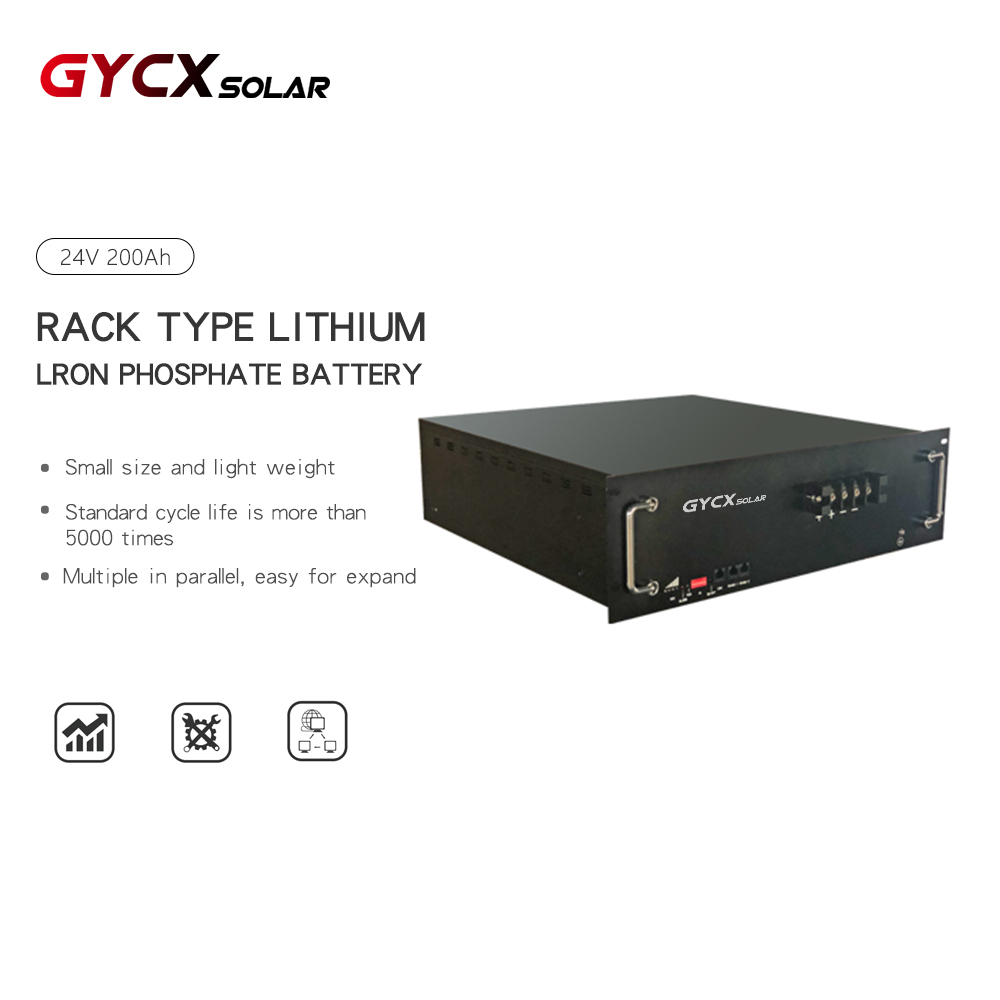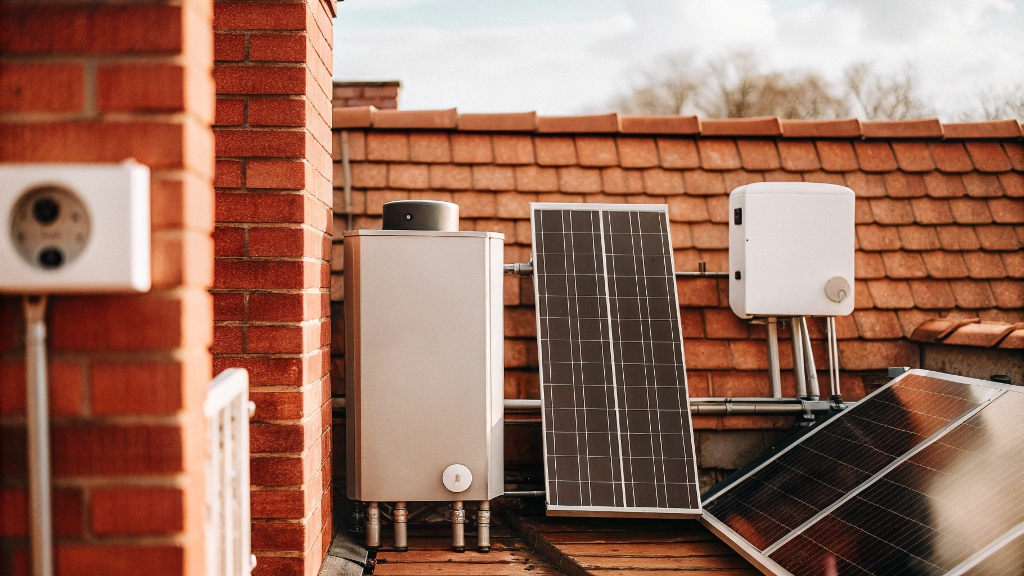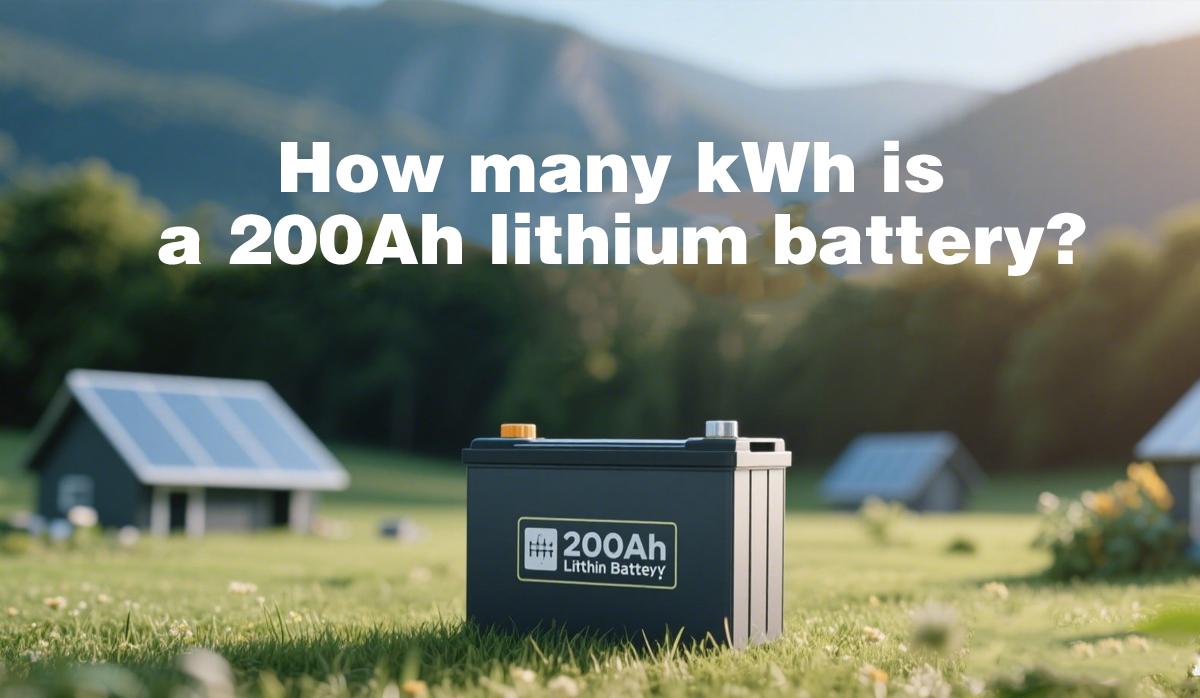¿Cuántos kWh tiene una batería de litio de 200 Ah?? Comprensión de las baterías solares apilables
1. Introducción
A medida que la energía solar se convierte en la piedra angular de una vida sostenible, Comprender el almacenamiento de la batería es más crítico que nunca.. Una pregunta común entre los entusiastas de la energía solar y los diseñadores de sistemas es: “¿Cuántos kWh tiene una batería de litio de 200Ah??"
Este artículo no solo explicará la conversión de amperios-hora. (ah) a kilovatios-hora (kWh) pero también proporciona información sobre cómo estos valores influyen en el rendimiento de su sistema solar.. Además, discutiremos los beneficios de usar baterías solares apilables para un almacenamiento de energía versátil y escalable.
Aprovechando la investigación de expertos de la industria y aplicaciones prácticas, Esta guía completa está diseñada para ayudarle a evaluar sus necesidades de almacenamiento de energía y tomar decisiones informadas al diseñar su sistema de energía solar..
2. Comprender la capacidad de la batería: Amperios-hora y kilovatios-hora
La capacidad de la batería suele expresarse de dos formas.:
- Amperios-hora (ah): Indica cuánta carga puede entregar una batería a lo largo del tiempo.
- Kilovatios-hora (kWh): Representa la energía total almacenada.. es producto del voltaje (en voltios) y capacidad actual (en amperios-hora), dividido por 1,000.
La fórmula de conversión básica
La fórmula estándar para convertir de Ah a kWh es:
[\texto{kWh} = frac{\texto{Voltaje (V)} \veces texto{Amperios-hora (ah)}}{1000}
]
Por ejemplo, una batería de 48 V y 200 Ah tendría una capacidad energética teórica de:
[\fractura{48 \veces 200}{1000} = 9.6 \texto{ kWh}
]
Esto significa que, en condiciones ideales, La batería puede almacenar hasta 9.6 KWH de energía.
3. El cálculo: Conversión de 200Ah a kWh

Al determinar cuántos kWh hay en una batería de litio de 200 Ah, El voltaje del sistema juega un papel crucial.. Exploremos cómo los diferentes voltajes afectan la capacidad energética.:
- A 12V:
[
\fractura{12 \veces 200}{1000} = 2.4 \texto{ kWh}
] - A 24V:
[
\fractura{24 \veces 200}{1000} = 4.8 \texto{ kWh}
] - A 48V:
[
\fractura{48 \veces 200}{1000} = 9.6 \texto{ kWh}
]
Típicamente, para aplicaciones de almacenamiento solar, Las baterías se utilizan a voltajes más altos. (p.ej., 48V) porque ofrecen una mayor densidad energética en una forma compacta. Una batería de 48V 200Ah, por lo tanto, entrega aproximadamente 9.6 KWH de energía, lo que lo convierte en una opción popular para sistemas residenciales y comerciales.
4. Factores que influyen en la energía utilizable
Mientras que los kWh calculados proporcionan una capacidad energética teórica, Varios factores del mundo real pueden afectar la energía utilizable real de su batería.:
a. Profundidad de descarga (Departamento de Defensa)
La mayoría de las baterías de litio no deben descargarse por completo para prolongar su vida útil.. Por ejemplo, si tienes una batería con 80% Departamento de Defensa, solo 80% del 9.6 kWh se puede utilizar de forma regular.
Energía utilizable = 9.6 kWh× 0.8 = 7.68 kWh
b. Eficiencia de la batería
Durante los ciclos de carga y descarga, Las baterías sufren pérdidas de energía.. Una batería de litio típica podría tener una eficiencia de ida y vuelta de aproximadamente 90%, meaning that the actual energy you get out is slightly less.
do. Condiciones ambientales y de temperatura
Temperaturas extremas, ya sea caliente o frio, can affect battery performance and reduce both capacity and efficiency. Proper installation and thermal management are key to maintaining optimal performance.
d. Envejecimiento y ciclo de vida
Con el tiempo, las baterías naturalmente pierden capacidad. Uso regular, incluso dentro de los parámetros recomendados, gradually diminishes the battery’s storage ability.
Understanding these factors is critical for planning a solar storage system that meets your energy needs reliably.
5. Comparación de tecnologías de baterías
To highlight why calculations and proper product selection matter, let’s compare different types of batteries often considered for solar energy storage:
| Tipo de Batería | Voltaje típico | Ciclo de vida | Densidad de energía | Solicitud |
|---|---|---|---|---|
| Iones de litio | 48V (comúnmente) | 3000+ ciclos | Alto | Residencial & Solar Comercial |
| Ácido de plomo | 12V-24V | 500-1000 ciclos | Más bajo | Sistemas de respaldo, configuraciones fuera de la red |
| Baterías de flujo | Varía | muy largo | Moderado | Escala de cuadrícula, almacenamiento de larga duración |
Las baterías de iones de litio suelen ofrecer una mayor densidad de energía y un ciclo de vida más prolongado en comparación con las opciones de plomo-ácido., haciéndolos más adecuados para aplicaciones solares modernas. Mientras tanto, Tecnologías emergentes como baterías de flujo., aunque prometedor para aplicaciones a gran escala, Son menos comunes en instalaciones residenciales..
6. ¿Por qué elegir baterías solares apilables??
el concepto de baterías solares apilables está diseñado para proporcionar flexibilidad y escalabilidad para sus necesidades de almacenamiento de energía. He aquí por qué son una opción ideal:
Diseño modular
Las baterías solares apilables le permiten comenzar con un sistema más pequeño y agregar más módulos a medida que crecen sus necesidades de energía.. Esta modularidad garantiza que pueda ampliar su sistema sin una revisión completa.
Eficiencia del espacio
El diseño de los sistemas apilables es compacto., haciéndolos perfectos para instalaciones donde el espacio es limitado. Maximizan la capacidad de almacenamiento y minimizan el espacio que ocupan..
Facilidad de mantenimiento e integración
Estos sistemas están diseñados para una instalación sencilla y una integración perfecta con otros componentes solares.. Su diseño garantiza que el mantenimiento sea sencillo., y componentes como inversores y sistemas de gestión de energía funcionan en armonía.
En nuestra línea de productos en GYCX Solar, nuestro Batería de litio apilable Las soluciones ejemplifican muchos beneficios..
Además, considerar productos complementarios:
7. Integrando productos solares GYCX en su sistema

Construir un sistema de energía solar robusto significa seleccionar productos que funcionen perfectamente juntos. En GYCX Solar, Nuestra gama de productos está diseñada para satisfacer diversas necesidades de almacenamiento de energía y garantizar la escalabilidad del sistema..
Batería de litio apilable
Nuestro modular Batería de litio apilable Los sistemas están diseñados para proporcionar flexibilidad y facilidad de expansión.. Son perfectos para aplicaciones residenciales y comerciales donde se anticipa crecimiento futuro..
Bateria solar
Nuestro dedicado Bateria solar solutions are optimized for deep-cycle performance, asegurando que manejen los ciclos diarios de carga y descarga de manera eficiente.
inversor solar
Ningún sistema solar está completo sin un eficiente inversor solar. Convierte la energía CC almacenada en las baterías en energía CA, Garantizar que la energía almacenada sea utilizable cuando sea necesario..
Al integrar estos productos de alta calidad, Tiene la seguridad de contar con un sistema de energía solar que es confiable y adaptable a las demandas energéticas futuras..
8. Consejos prácticos y mantenimiento
Para aprovechar al máximo su sistema de batería solar, considere los siguientes consejos prácticos:
Monitoreo regular
Utilice un sistema de gestión de energía para controlar periódicamente el rendimiento de la batería.. Esto ayuda a detectar cualquier problema a tiempo y garantiza una eficiencia óptima..
Controles ambientales
Asegúrese de que el almacenamiento de su batería esté instalado en un entorno con temperaturas estables.. Una ventilación adecuada o un control climático pueden prolongar significativamente la vida útil de la batería.
Adherirse a las mejores prácticas
Follow manufacturer guidelines for installation and maintenance. Esto incluye el cableado adecuado., montaje seguro, e inspecciones periódicas.
Plan de escalabilidad
Opte por un sistema modular como nuestro Batería de litio apilable so that you can easily scale your energy storage as your needs evolve. This future-proofs your solar energy system and protects your investment over time.
9. Conclusión
Determining how many kWh a 200Ah lithium battery can deliver is a fundamental step in designing an efficient solar energy system.
Con una clasificación estándar de 48 V, una batería de 200 Ah proporciona teóricamente alrededor 9.6 KWH de energía, though real-world factors like depth of discharge, pérdidas de eficiencia, and environmental conditions will affect usable capacity.
By understanding these calculations and the factors that influence battery performance, Puedes planificar mejor tus necesidades de almacenamiento de energía.. Además, elegir un modular, solución ampliable, como baterías solares apilables—garantiza que su sistema sea eficiente y escalable. En GYCX Solar, ofrecemos una gama de productos, incluyendo nuestro Batería de litio apilable, Bateria solar, y inversor solar, todo diseñado para integrarse perfectamente en su instalación solar.
Adopte la alta calidad, Tecnología diseñada específicamente para optimizar su sistema de energía solar y allanar el camino hacia una sostenibilidad., futuro energéticamente independiente.

